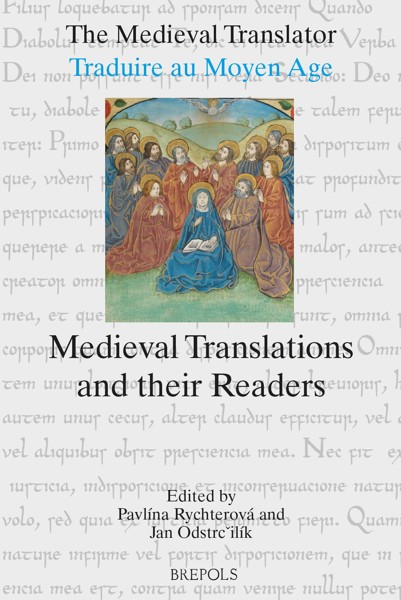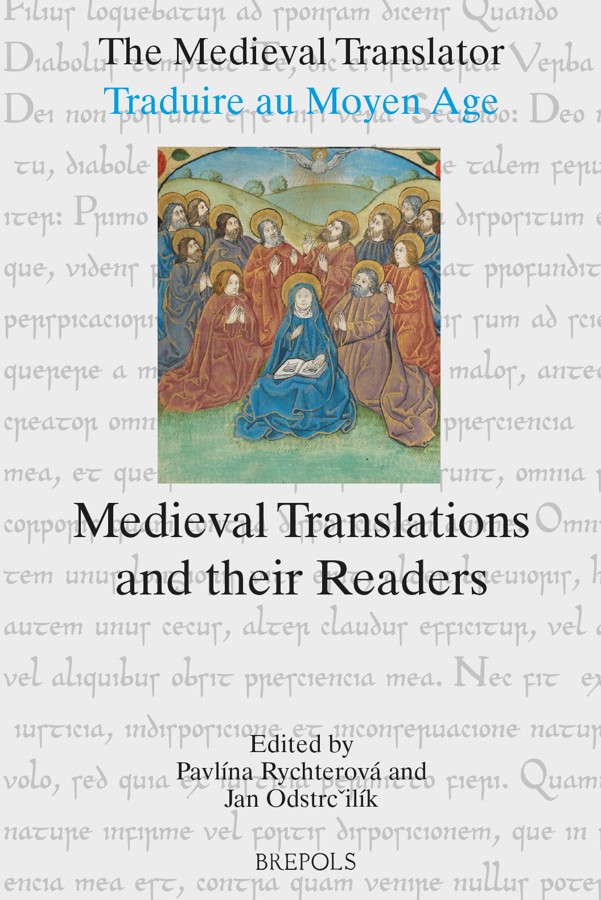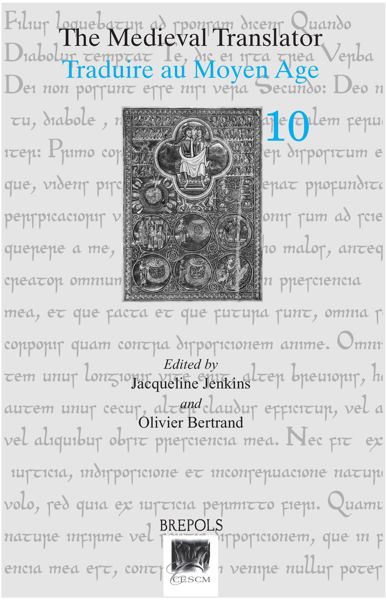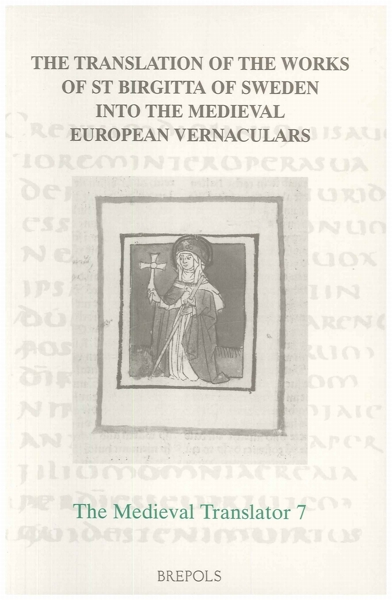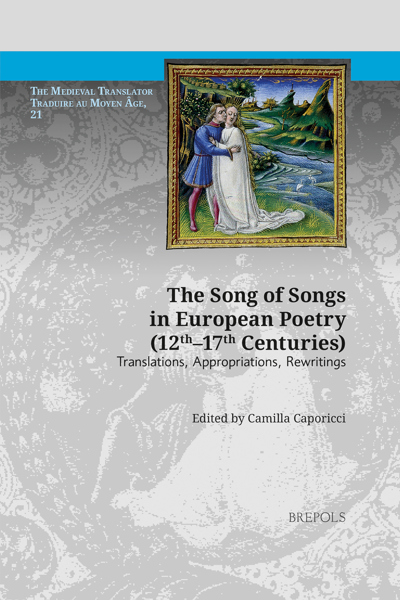
Medieval Translations and their Readers
Pavlína Rychterová, Jan Odstrcilik (eds)
- Pages: 364 p.
- Size:156 x 234 mm
- Illustrations:17 b/w
- Language(s):English
- Publication Year:2023
- € 85,00 EXCL. VAT RETAIL PRICE
- ISBN: 978-2-503-59190-2
- Paperback
- Available
- € 85,00 EXCL. VAT RETAIL PRICE
- ISBN: 978-2-503-59192-6
- E-book
- Available
The volume presents proceedings from the XI Cardiff conference on the Theory and Practice of Translation in the Middle Ages, 2017, March 15-18. It collects essays on various European vernacular languages, with focus on interactions of translators and their readers.
“Der vorliegende Sammelband unternimmt den Versuch, verschiedene religiöse oder pastorale Texte, die seit dem Spätmittelalter in die verschiedenen europäischen Umgangssprachen übersetzt wurden, kritisch zu untersuchen und dabei nach Gemeinsamkeiten und Unterschieden zu suchen.” (Spyridon P. Panagopoulos, in Sehepunkte, 7/8, 24, 2024)
"Pavlína Rychterová and Jan Odstrčilík deserve congratulations for their work in collecting the volume (...). This volume has made a useful contribution to the scholarly conversation about translations in the medieval world, and that alone makes it worthy of inclusion in university library collections. For scholars working on the subject, personal libraries should find this collection a spot on their shelves, too." (Kyle C. Lincoln, in in The Medieval Review, January 2026)
Dr. Pavlína Rychterová is Vice-head of the department Historical Identity Research at the Institute for Medieval Research, Austrian Academy of Sciences. She specializes in late medieval vernacular religious literatures. Dr. Jan Odstrčilík is a Post-doc researcher att the Institute for Medieval Research, Austrian Academy of Sciences, he specializes in late medieval latin multilingual texts.
The papers gathered in this volume focus on ‘Medieval Translations and their Readership’, the special strand of the 11th Cardiff Conference on the Theory and Practice of Translation in the Middle Ages. The volume discusses the role of the reader in the process of translation, communities of readers and their active participation in translators’ choices, and the translation as a result of a dialogue between author, text and its reader.
Translations of works of theology and religious education, the focus of most of the contributions to this volume, constitute excellent material for research into medieval lay audiences. Vernacular religious educational texts from the thirteenth to the sixteenth century show a great deal of conformity. Individual authors resorted to similar strategies and techniques to meet any translation challenges, to fulfil educational aims, or to relate to their readers and to accommodate their expectations. Simultaneously, the readers played a crucial role as they shaped the production of texts in many ways.
Research into Middle English pastoral and devotional literature and the conditions of its production still dominates scholarly work in the field. Religious texts in vernaculars other than Middle English have so far received little attention. This volume tries to tackle this lacuna by offering a careful comparative analysis of relevant vernacular texts across Europe, including Slavonic works, using historiographical, philological, and linguistic methods as well as literary scholarly approaches.
The sixteen chapters are organized in three sections. The first one, ‘Authors and Readers’, brings together articles examining the idea of a model reader as expressed in translations of biblical texts and texts of religious instruction. The contributions in the second section, on the ‘Dissimination of Knowledge’, focus on how translators addressed readers, how people read, and how they used the manuscripts and printed books made for them. The target audience or model reader of the first section is here put into perspective with the help of discussions of reading practices. The last section, ‘Religious Education in Transition’, comprises contributions which focus on textual material from the period when printed books gradually changed, the relationship between languages, texts, authors, and readers.
Introduction
Authors and Readers
Alessandro Zironi: Gothic Texts: Translations, Audiences, Readers.
Maria Teresa Ramandi: Translating Latin in the Medieval North: Agnesar Saga and its Readership.
Jonatan Pettersson: Saving the Reader from the Bible: The Old Swedish Pentateuch Translation and its Reflective Model Reader.
Andrea Svobodová, Kateřina Voleková, and Pavlína Rychterová: Old Czech Biblical Prologues: A Medieval Reader’s Gateway to the Study of the Bible.
Marco Robecchi: Reader and Public in a Fourteenth-Century French Translation: Jean le Long and his Readership.
Jaroslav Svátek: From Devotion to Censure: Hans Tucher’s and Bernard of Breydenbach’s Pilgrim Accounts and their Two Medieval Czech Translations.
Katrin Janz-Wenig: Educating Laymen and Nuns in the Late Middle Ages in German-Speaking and Dutch Environments.
Dissemination of Knowledge
Elisabeth Salter: Miscellaneity in Practice: A Further Look at the English Text Known As the Lay Folk’s Catechism.
Jörg Sonntag: Old Material and New Perspectives: Master Ingold’s ‘Golden Game’.
Pavlína Rychterová: Jan Hus, The Daughter: Religious Education between Translation and Adaptation.
Jan Odstrčilík: Unbearable Lightness of Multilingual Sermons? The So-Called Wilhering Adaptation of Three Czech Sermons of Jan Hus.
Religious Education in Transition
Andrea Radošević: The Fifteenth- and Sixteenth-Century Croatian Translations of the Latin Liber de modo bene vivendi ad sororem.
Tamás Karáth: Early Readers’ Responses to the English Translations of Richard Rolle’s Emendatio vite.
Takami Matsuda: Predestination and Free Will in the Old French and Middle English Versions of the Elucidarium and in the Middle English Chastising of God’s Children.
Naoë Kukita Yoshikawa: The Boke of Gostely Grace and the Orcherd of Syon: Revelations of approuyd wymmen and their Readership in Fifteenth-Century England.
Omar Khalaf: The Social Function of a Translation: Earl Rivers, William Caxton, and the Dicts and Sayings of the Philosophers.
